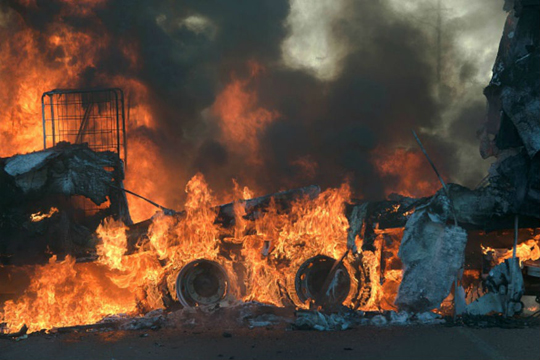Lahore, Jun 25: At least 123 people were charred to death and over 100 others injured after an oil tanker overturned and burst into flames on a highway in Bahawalpur district of Pakistan's Punjab Province.

The tanker exploded after fuel leaking from its damaged container caught fire. The blaze from the oil spill engulfed scores of residents who had rushed to collect leaking fuel.
Punjab government spokesman Malik Ahmad Khan said at least 123 people were killed and over 100 others injured in the explosion.
The tanker was on way to Lahore from Karachi when the driver lost control and crashed. Nearby villagers rushed toward the overturned tanker with cans to take the leaking fuel.
The fire brigade arrived on the site of the incident shortly after the blaze started and rescue operations were initiated.
Two fire engines battled the fire and eventually doused it, local media said. At least six cars and 12 motorcycles were burnt in the blaze.
The injured were transferred to District Headquarters Hospital and Bahawal Victoria Hospital, rescue officials said.
Army chief Gen Qamar Javed Bajwa ordered the Army to assist the civil administration in the rescue effort.
Army helicopters have been deployed in the rescue operations.
"COAS expresses grief on losses in oil tanker incident. Directed provision of full assistance to civil administration in rescue (and) relief efforts," Director General of the Inter-Services Public Relations (ISPR) Major Gen Asif Ghafoor tweeted.
"Army Aviation helicopters sent for evacuation of casualties to hospitals (and) burn centres. Hospitals placed on high alert," he added. Punjab Chief Minister Shahbaz Sharif ordered government officials to file a report over the incident.






Comments
Add new comment